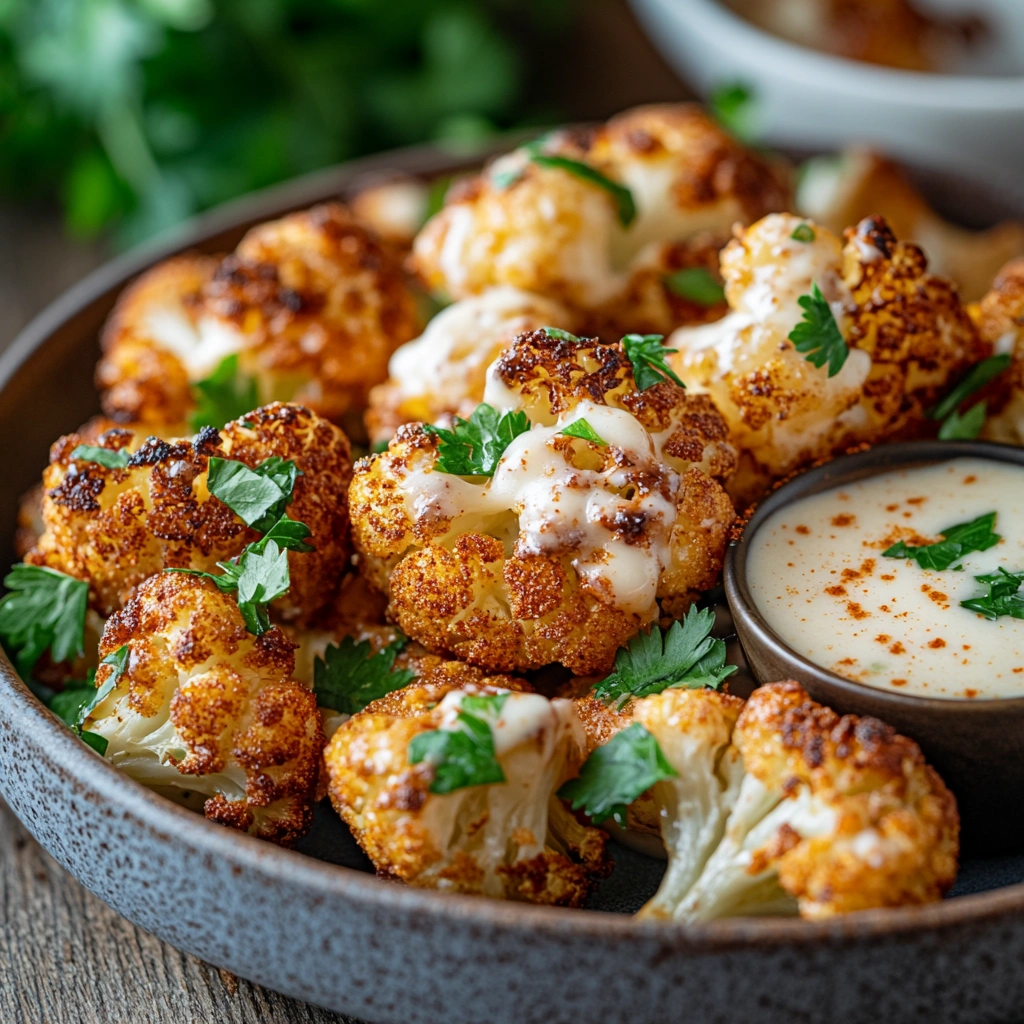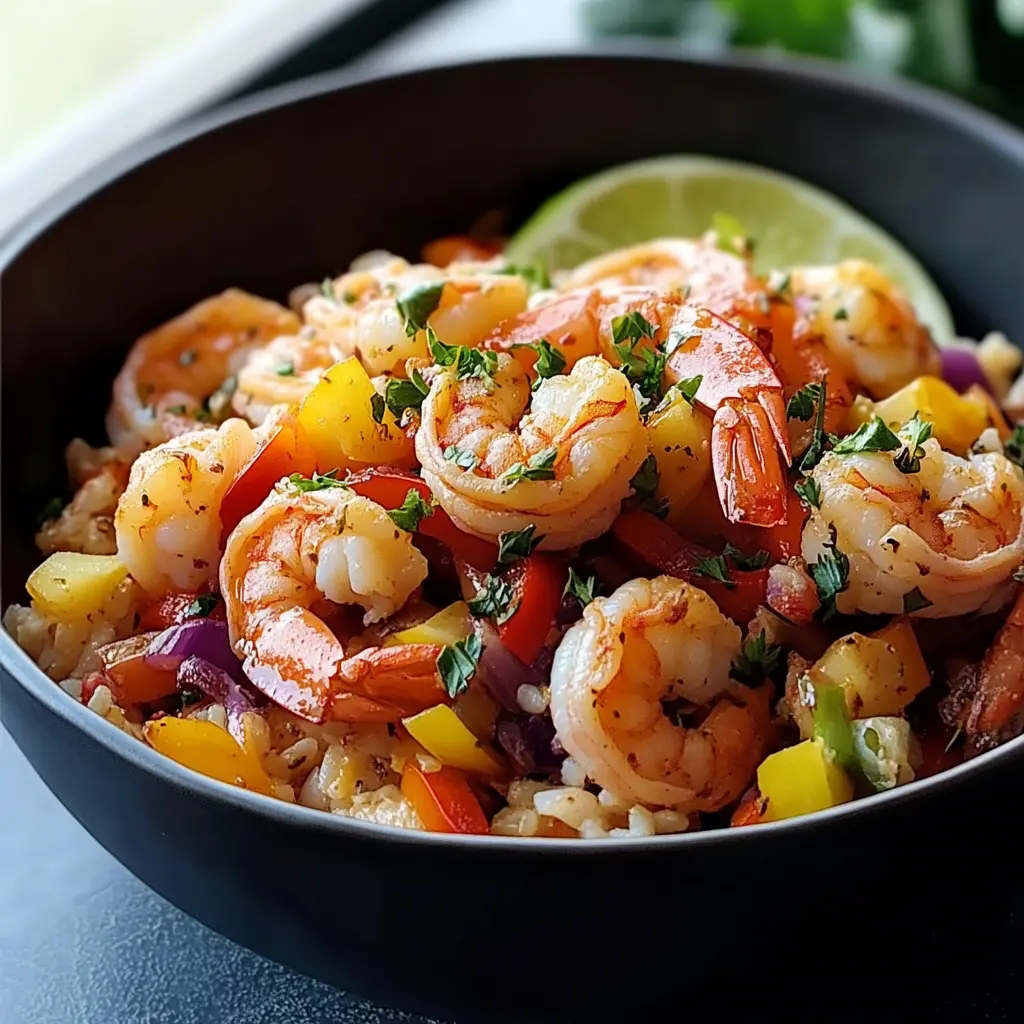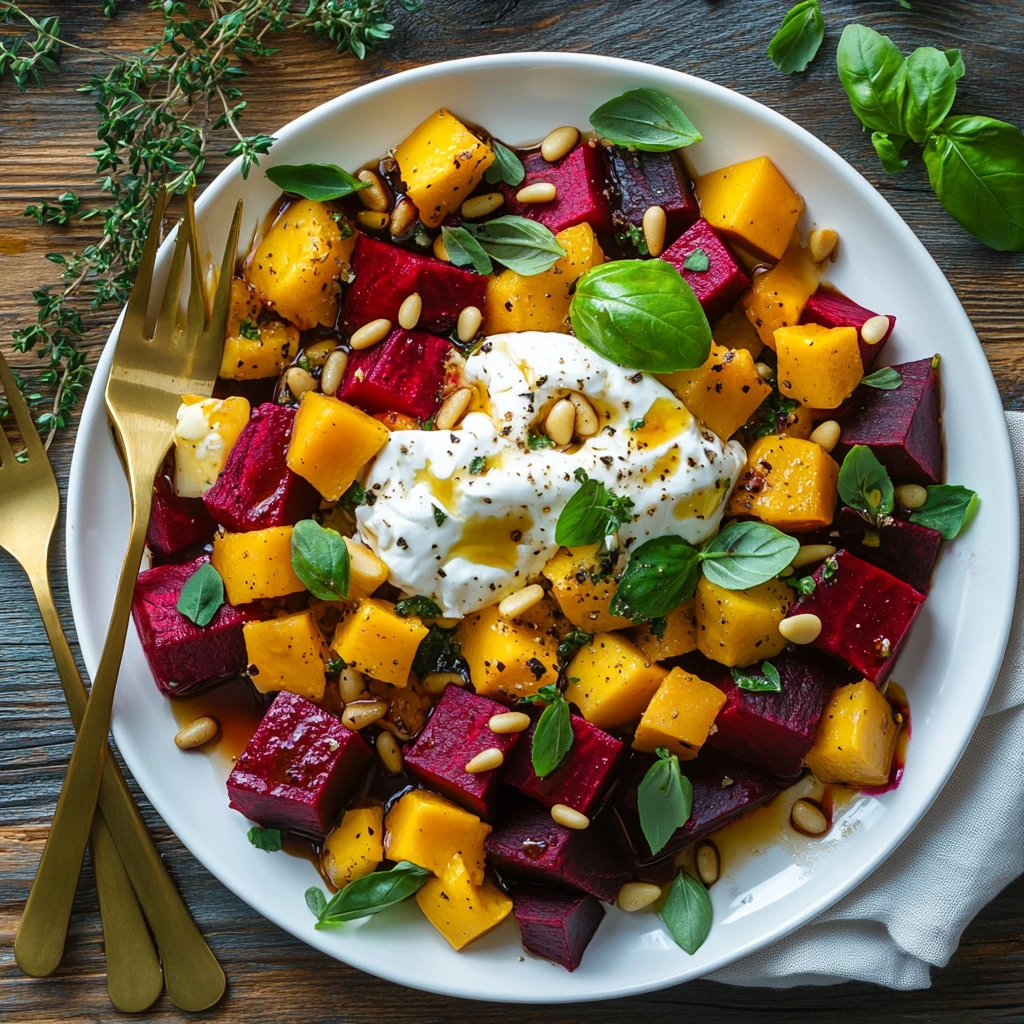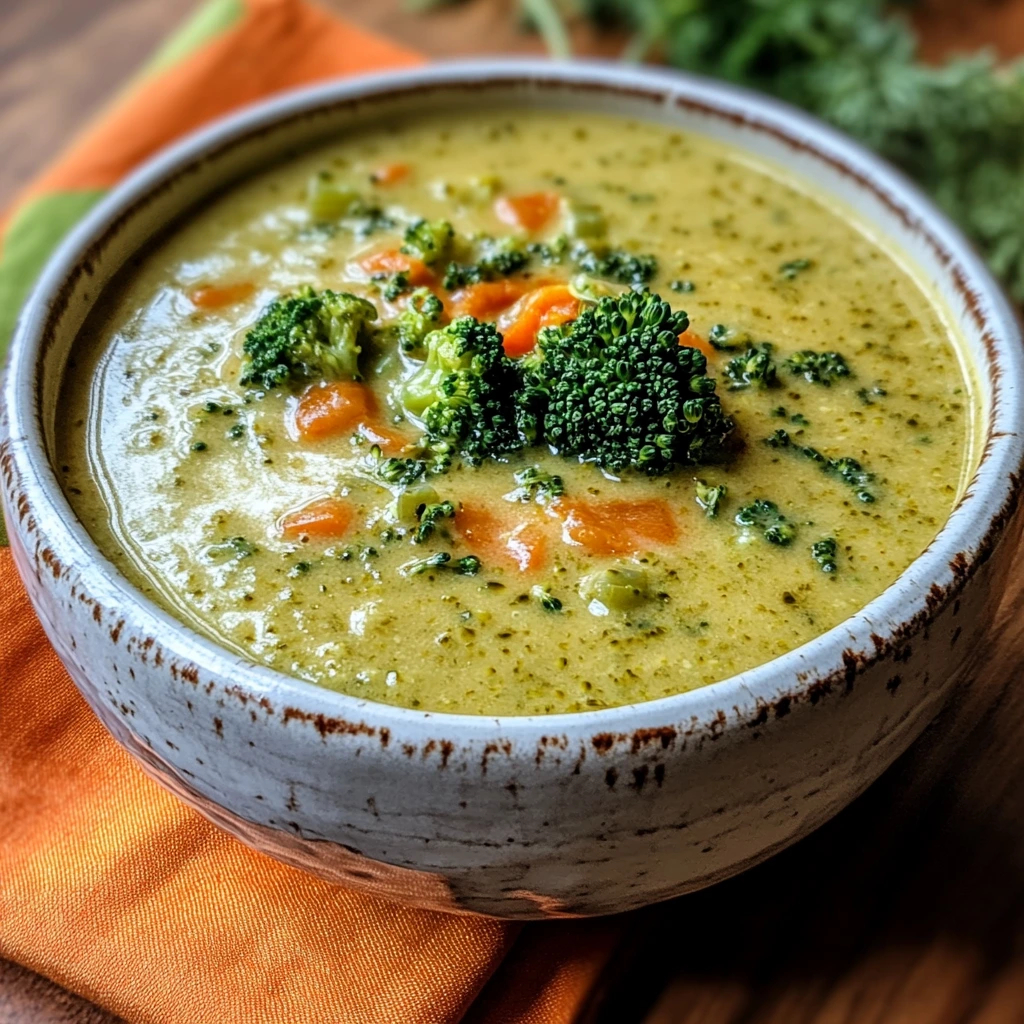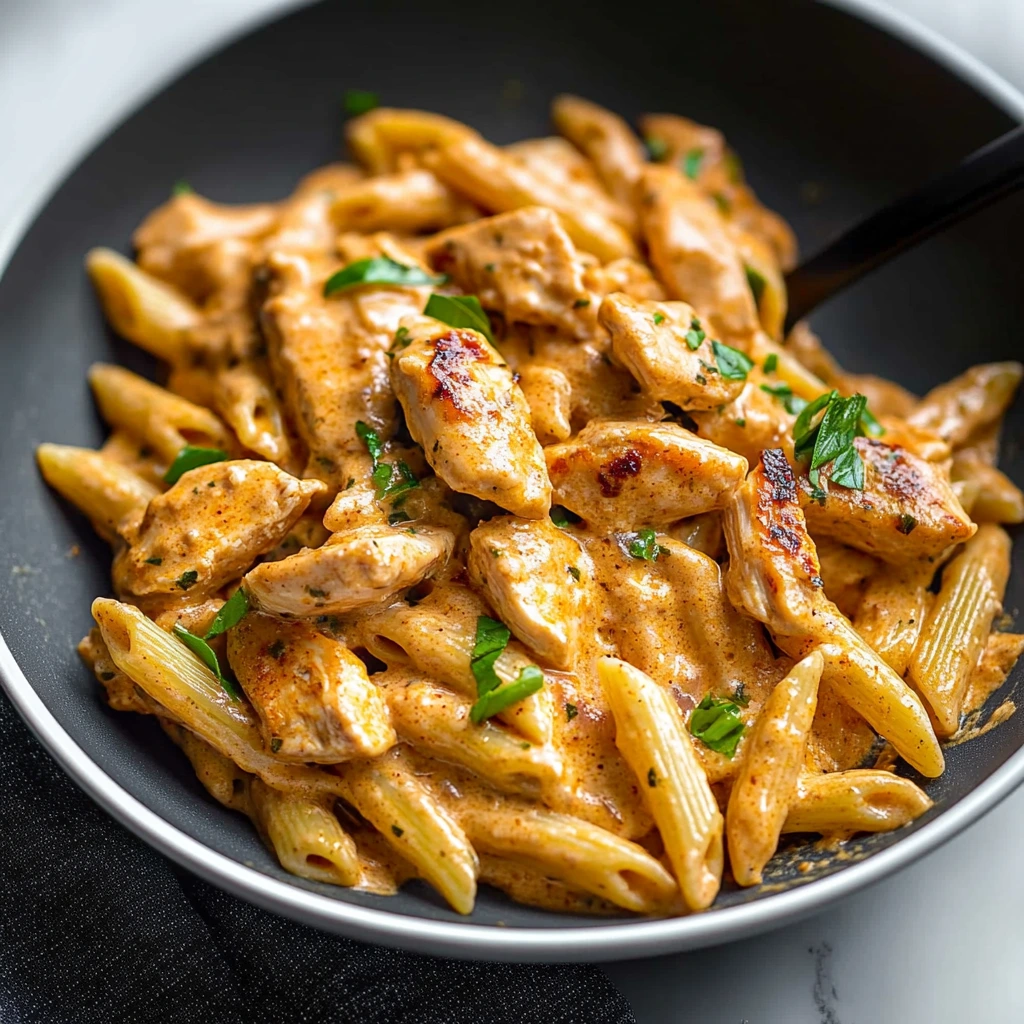Moroccan cuisine is known for its bold, warm spices and unique flavor combinations. One standout dish that has gained popularity is Moroccan Cauliflower with Tahini-Honey, a simple yet deeply flavorful recipe that requires just five ingredients. This dish brings together roasted cauliflower, creamy tahini, sweet honey, aromatic spices, and olive oil to create a side dish or main course that is both nourishing and satisfying.
What makes this dish truly special is its balance of flavors and textures. The cauliflower is roasted until golden brown, giving it a delicious crispiness on the edges while remaining tender inside. The tahini-honey drizzle adds a nutty sweetness that complements the Moroccan spice blend, making every bite a delight.
Why You’ll Love This Recipe
- Minimal ingredients – Only five simple ingredients needed
- Quick preparation – Ready in under 30 minutes
- Packed with flavor – Smoky, sweet, nutty, and rich all in one dish
- Healthy and nutritious – High in fiber, protein, and healthy fats
- Versatile – Perfect as a side, salad topping, or even a main dish
This dish is also gluten-free, vegetarian, and can be made vegan by swapping honey for maple syrup. Whether you’re looking for a weeknight dinner option or a dish to impress guests, Moroccan cauliflower with tahini-honey is a must-try recipe that celebrates the essence of North African flavors with minimal effort.
Ingredients Breakdown
To keep things simple, this recipe calls for only five ingredients, yet each one plays a crucial role in creating the perfect balance of taste and texture.
1. Cauliflower
- The base of the dish, cauliflower, is mild yet highly absorbent, making it ideal for Moroccan spices.
- Roasting enhances its natural sweetness and nuttiness while adding crispiness.
2. Tahini
- A creamy, nutty paste made from ground sesame seeds.
- Adds depth, richness, and smoothness to the sauce.
3. Honey
- Balances the dish with natural sweetness, counteracting the earthy spices.
- Helps caramelize the roasted cauliflower slightly.
4. Moroccan Spices
- Typically includes cumin, paprika, and coriander.
- Adds warmth and a subtle smoky flavor.
5. Olive Oil
- Used for roasting to achieve crispy edges.
- Adds richness and healthy fats to the dish.
Optional Additions: Garlic, lemon juice, sesame seeds, fresh herbs like parsley or cilantro.

Step-by-Step Cooking Instructions
This simple yet flavorful Moroccan Cauliflower with Tahini-Honey comes together in just a few steps. By following these detailed instructions, you’ll achieve perfectly roasted, crispy cauliflower with a smooth and nutty tahini-honey drizzle.
Step 1: Prepping the Cauliflower
Before roasting, it’s essential to prepare the cauliflower properly to ensure even cooking and maximum flavor absorption.
- Choose a fresh cauliflower: Look for a firm, white head with no dark spots or soft areas.
- Wash and dry thoroughly: Rinse under cold water to remove any dirt or debris. Pat dry with a kitchen towel.
- Cut into florets: Remove the leaves and trim the thick central stem. Then, cut the cauliflower into bite-sized florets. Try to keep them uniform in size so they cook evenly.
- Optional step: If you want extra-crispy cauliflower, toss the florets in a clean kitchen towel for a few minutes to remove excess moisture.
Step 2: Making the Moroccan Spice Blend
The heart of this dish lies in the warm, aromatic Moroccan spices, which coat the cauliflower before roasting.
- In a small bowl, mix together:
- 1 teaspoon cumin
- 1 teaspoon paprika
- ½ teaspoon coriander
- ½ teaspoon salt
- ¼ teaspoon black pepper
- Adjust seasoning based on your taste. If you enjoy a spicier kick, add ¼ teaspoon of cayenne pepper or chili flakes.
Step 3: Roasting the Cauliflower
Roasting is the key to crispy, caramelized cauliflower. The high heat helps to enhance the flavors and create a delicious golden-brown texture.
- Preheat your oven to 425°F (220°C). This high temperature ensures crispy edges.
- Prepare a baking sheet: Line it with parchment paper or lightly grease it with olive oil.
- Coat the cauliflower:
- Place the cauliflower florets in a large bowl.
- Drizzle 2 tablespoons of olive oil over them.
- Sprinkle the Moroccan spice mix evenly over the florets.
- Toss well to coat each piece thoroughly.
- Arrange on the baking sheet: Spread the cauliflower in a single layer to avoid overcrowding (which can cause steaming instead of roasting).
- Roast for 20-25 minutes: Flip halfway through for even browning. The cauliflower should be crispy on the edges and tender inside.
Step 4: Making the Tahini-Honey Sauce
This nutty, slightly sweet sauce ties the dish together, enhancing both the flavor and texture.
- In a small bowl, whisk together:
- 2 tablespoons tahini
- 1 tablespoon honey
- 2 tablespoons warm water (adjust for consistency)
- Stir until smooth. If the sauce is too thick, add a teaspoon of water at a time until you reach a pourable consistency.
Step 5: Assembling and Serving
- Remove cauliflower from the oven: Once it’s golden brown and crispy, transfer to a serving plate.
- Drizzle the tahini-honey sauce: Pour it generously over the roasted florets.
- Garnish (optional): Sprinkle with fresh parsley, sesame seeds, or pomegranate seeds for extra flavor and color.
- Serve immediately: Enjoy as a side dish or pair it with grains like couscous or quinoa.
Expert Tips for Perfect Roasted Cauliflower
Achieving crispy, flavorful roasted cauliflower requires a few key techniques. Follow these expert tips to ensure your Moroccan Cauliflower with Tahini-Honey turns out perfectly every time!
1. Use High Heat for Crispy Edges
- Roast at 425°F (220°C) to caramelize the cauliflower and create crispy, golden edges.
- Lower temperatures may cause the cauliflower to steam rather than roast, leading to a soft, mushy texture.
2. Don’t Overcrowd the Baking Sheet
- Spread the cauliflower in a single layer with space between each floret.
- If the florets are too close together, they release steam and won’t crisp up properly.
- Use two baking sheets if necessary for even roasting.
3. Preheat the Baking Sheet for Extra Crispiness
- Place the baking sheet in the oven while it preheats.
- Adding the cauliflower to a hot surface jumpstarts the roasting process and creates a crispier texture.
4. Toss the Cauliflower Thoroughly with Oil and Spices
- Ensure each floret is evenly coated with olive oil and Moroccan spices.
- For best results, mix in a large bowl before spreading onto the baking sheet.
5. Flip Halfway Through Cooking
- After 10-12 minutes, flip the florets with a spatula to ensure even browning on all sides.
- This prevents burning and ensures a more balanced texture.
6. Dry the Cauliflower Well Before Roasting
- Excess moisture prevents proper caramelization.
- Pat dry with a kitchen towel after washing to remove any water.
Variations and Customizations
One of the best things about Moroccan Cauliflower with Tahini-Honey is how easy it is to customize based on dietary preferences, spice levels, or available ingredients. Whether you want to make it spicier, vegan-friendly, or change up the sauce, here are some delicious variations to try.
1. Make It Spicier
If you enjoy a bolder, spicier flavor, try adding some heat to your dish.
- Harissa Paste – Add ½ to 1 teaspoon of harissa paste to the spice mix before roasting.
- Red Pepper Flakes – Sprinkle ¼ teaspoon of crushed red pepper flakes over the cauliflower before or after roasting.
- Cayenne Pepper – Add ¼ teaspoon of cayenne to the spice blend for a smoky kick.
2. Make It Vegan
This recipe is almost vegan—just swap out the honey for a plant-based alternative.
- Maple Syrup – A perfect 1:1 replacement that adds sweetness with a slight caramel-like flavor.
- Agave Nectar – A neutral, mildly sweet option.
- Date Syrup – Traditional in Middle Eastern cuisine and pairs beautifully with tahini.
3. Try a Different Sauce
The tahini-honey sauce is a great match for Moroccan flavors, but you can experiment with other toppings:
- Lemon-Garlic Tahini Sauce – Add lemon juice and minced garlic to your tahini sauce for a tangier, garlicky twist.
- Coconut Yogurt Sauce – Blend coconut yogurt, lime juice, and cilantro for a creamy, dairy-free option.
- Spiced Pomegranate Molasses Drizzle – Use pomegranate molasses for a tart, slightly sweet contrast.
4. Change the Spice Blend
Moroccan spices provide warmth and depth, but you can modify them based on what you have on hand:
- Smoky Paprika & Garlic – For a more Spanish-inspired flavor.
- Turmeric & Ginger – Adds earthy and slightly peppery notes.
- Curry Powder – Infuses the dish with a rich Indian-inspired aroma.
5. Add a Crunchy Topping
For extra texture, sprinkle crunchy toppings before serving:
- Toasted Almonds or Pine Nuts – Adds a nutty crunch.
- Pomegranate Seeds – Provides a fresh, juicy burst.
- Sesame Seeds – Enhances the tahini flavor.
6. Serve It in Different Ways
This dish is incredibly versatile and can be served in multiple ways:
- As a side dish – Pair with grilled meats, fish, or tofu.
- Over grains – Serve with quinoa, couscous, or farro for a filling meal.
- In a salad – Toss with arugula, chickpeas, and a lemon dressing.
- As a wrap filling – Stuff into pita bread with hummus and fresh veggies.

Nutritional Benefits of This Dish
Moroccan Cauliflower with Tahini-Honey is not only delicious but also packed with essential nutrients. Each ingredient in this dish contributes to a well-balanced, healthy meal that supports overall well-being. Below is a breakdown of the nutritional benefits of the key ingredients.
1. Cauliflower – A Nutrient-Dense Superfood
Cauliflower is an excellent source of fiber, vitamins, and antioxidants, making it one of the healthiest vegetables available.
- High in fiber – Supports digestion and promotes gut health.
- Rich in vitamin C – Helps boost the immune system and improves skin health.
- Contains vitamin K – Essential for bone health and blood clotting.
- Low in calories – Makes it a great option for weight management.
- High in antioxidants – Helps reduce inflammation and protect against chronic diseases.
Cauliflower is also a great low-carb substitute for grains, making this dish suitable for low-carb and keto diets.
2. Tahini – A Source of Healthy Fats and Protein
Tahini, made from ground sesame seeds, is highly nutritious and offers several health benefits.
- High in monounsaturated and polyunsaturated fats – Supports heart health.
- Rich in protein – Helps with muscle growth and repair.
- Packed with minerals – Contains calcium, magnesium, and phosphorus, which are important for bone health.
- Good source of antioxidants – Helps reduce inflammation.
Tahini is also a good option for those following a plant-based diet, as it provides protein and essential nutrients.
3. Honey – A Natural Sweetener with Antioxidants
Honey is more than just a sweetener; it has several nutritional benefits.
- Contains antioxidants – Helps fight oxidative stress and inflammation.
- Supports digestion – Has natural antibacterial properties.
- Provides quick energy – Ideal for a natural energy boost.
To make this dish vegan, honey can be replaced with maple syrup or date syrup, which offer similar benefits.
4. Olive Oil – A Heart-Healthy Fat
Olive oil is a staple in Mediterranean and Moroccan diets due to its numerous health benefits.
- Rich in monounsaturated fats – Supports cardiovascular health.
- Contains anti-inflammatory compounds – Helps reduce the risk of chronic diseases.
- Helps with nutrient absorption – Enhances the absorption of fat-soluble vitamins like A, D, E, and K.
FAQs (Frequently Asked Questions)
1. Can I use frozen cauliflower?
Yes, but roasting time may be longer since frozen cauliflower contains more moisture.
2. How long does it keep?
Store in an airtight container in the fridge for up to 4 days.
3. Can I make this in an air fryer?
Absolutely! Roast at 375°F (190°C) for 15 minutes, shaking halfway through.
4. What can I substitute for tahini?
- Almond butter
- Cashew butter
- Greek yogurt for a creamy twist
5. Is this recipe keto-friendly?
To make it keto, reduce the honey or use a keto-friendly sweetener.
Conclusion
Moroccan Cauliflower with Tahini-Honey is a perfect blend of flavors and textures that is simple to make yet deeply satisfying. With just five ingredients, this dish is an excellent addition to any meal and offers a healthy, flavorful alternative to traditional sides.
The smoky, sweet, and nutty elements make this dish stand out, whether served alone, over grains, or alongside proteins. Plus, it’s easy to customize to fit different diets and spice preferences.
Try this recipe today and bring the bold flavors of Moroccan cuisine to your kitchen!
Print
Moroccan Cauliflower with Tahini-Honey (5 Ingredients)
Description
Moroccan Cauliflower with Tahini-Honey is a simple yet flavorful dish that combines warm Moroccan spices, crispy roasted cauliflower, and a creamy, slightly sweet tahini-honey drizzle. With just five ingredients, this recipe is easy to prepare and packed with nutrients, rich textures, and bold flavors.
The cauliflower is roasted at high heat, creating golden, crispy edges while staying tender inside. The tahini-honey sauce adds a perfect balance of nutty, creamy, and subtly sweet flavors that enhance the natural earthiness of the cauliflower. Whether served as a side dish, salad topping, or main course, this dish is an excellent vegetarian, gluten-free, and nutrient-dense option.
It’s versatile and customizable, allowing you to adjust the spice level, swap ingredients for dietary preferences, and pair it with various grains or proteins. Ideal for weeknight dinners or special occasions, this dish brings the essence of Moroccan cuisine into your kitchen with minimal effort.
Ingredients
- 4 Tbsp. extra-virgin olive oil, divided
- 3/4 tsp. kosher salt, divided
- 4 Tbsp. mild harissa, divided (such as Mina brand)
- 1 large head cauliflower, trimmed and sliced into florets (about 7 to 8 cups)
- 2 Tbsp. tahini
- 1 Tbsp. honey
- 2 Tbsp. fresh lemon juice, divided
- 1/4 tsp. freshly ground black pepper
- Fresh chopped parsley for garnish (optional)
Instructions
-
Preheat oven to 425°F.
-
In a large bowl, combine 2 Tbsp. of the oil, 1/2 tsp. salt, and 2 Tbsp. harissa; mix well. Add cauliflower and toss to evenly coat. Spread on a rimmed baking sheet and bake for 35 minutes, tossing once halfway through, until tender.
Remove from oven and toss with remaining 2 Tbsp. harissa; bake for another 5 to 7 minutes, until caramelized and charred in some spots.
-
Meanwhile, prepare Tahini-Honey by combining remaining 2 Tbsp. olive oil, tahini, honey, 1 Tbsp. lemon juice, remaining 1/4 tsp. salt, and black pepper; stir with a whisk. Whisk in 1 Tbsp. water to thin out to desired consistency.
-
Transfer roasted cauliflower to a bowl or serving platter. Drizzle with tahini-honey, and squeeze remaining 1 Tbsp. lemon juice overtop. Garnish with fresh parsley, if desired
Notes
1. Ingredient Substitutions
- Tahini substitute – If you don’t have tahini, you can use almond butter, cashew butter, or Greek yogurt for a creamy alternative.
- Honey substitute – For a vegan option, replace honey with maple syrup, agave nectar, or date syrup.
- Olive oil alternative – Avocado oil or melted coconut oil can be used instead of olive oil.
2. Storage and Reheating
- Store leftovers in an airtight container in the refrigerator for up to 4 days.
- Reheat in an oven at 375°F (190°C) for 5-10 minutes to maintain crispiness.
- The tahini-honey sauce can be stored separately in the fridge and whisked before serving.
3. Make-Ahead Tips
- You can cut the cauliflower and mix the spice blend in advance for quicker meal prep.
- The tahini-honey sauce can be made ahead of time and stored in the fridge for up to a week.
4. Best Serving Suggestions
- Serve as a side dish with grilled meats, fish, or tofu.
- Add to grain bowls with quinoa, couscous, or farro.
- Toss with chickpeas, arugula, and a lemon dressing for a hearty salad.
- Use as a filling for wraps or pita sandwiches with hummus and fresh vegetables.
5. Roasting Tips for Extra Crispiness
- Use a high oven temperature (425°F/220°C) to achieve caramelization.
- Preheat the baking sheet before adding the cauliflower to speed up crisping.
- Do not overcrowd the pan—spread the florets in a single layer.
- Flip the cauliflower halfway through roasting to ensure even browning.


